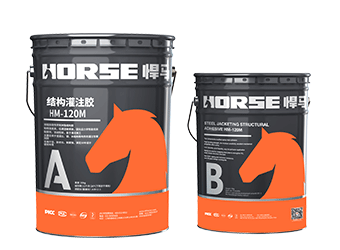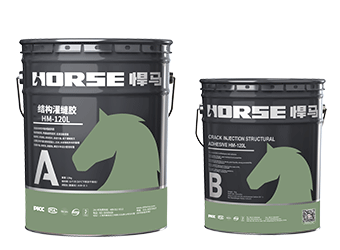Solutions
Horse Construction offers full range of structural strengthening materials with technical supports, documentation supports, products supports, project supports.
How To Avoid Hollowing When Sticking Steel Reinforcement?

In bonding steel reinforcement, one of the important factors to evaluate the quality is whether the hollow drum exists.
The hazards of empty drums
The hollowing between the steel plate and the base material will inevitably lead to the discontinuity of the adhesive layer between the two. The steel plate and the base material work together under the force of the steel glue. The absence of the adhesive layer will destroy the stress transfer between the adhesive layers, and the adhesive layer near the hollow drum will form a stress concentration. As the load increases, it is easy to peel off near the stress concentration.
How to remedy the empty drum
According to the provisions of GB50550-2010 "Code for Acceptance of Construction Quality of Building Structure Reinforcement Engineering", after the construction of bonded steel is completed, a hollow drum inspection is required. The hammering method or other effective detection methods can be used for inspection, and it is required that the effective bonding area should not be less than 95% of the total bonding area.
If the area of a single hollow drum is not larger than 10,000 square millimeters, it can be repaired by drilling and injection method. If the area of a single hollow drum is larger than 10,000 square millimeters, the reposting should be removed and re-checked and accepted.
Although the hollow drum can be repaired by drilling and injection methods, the steel plate drilling will further damage the integrity of the steel plate, reduce the cross-sectional area of the steel plate, and weaken the bearing capacity of the steel plate. Therefore, the best way is to "strangle" the hollow drum at the source.

How to effectively avoid empty drums
1. Ensure that the steel glue can form a uniform glue layer during construction
When the steel plate is pasted on the bottom of the beam, the bottom of the plate, etc., the thick and thin edges of the glue layer should be applied. When vertical pasting is used on columns, walls and other components, the glue layer should be thick at the top and thin at the bottom. These two bonding methods can ensure that when the steel plate is subjected to curing stress in the later stage, the colloid can form a uniform thickness and reduce the possibility of hollow drums.
2. Apply curing pressure to ensure sufficient amount of glue
The specification requires that the average thickness of the glue layer after sticking steel reinforcement is 2mm-3mm. If loss is not considered, theoretically the amount of glue used per square meter of steel plate is 0.003 cubic meters. However, after the actual curing pressure is applied to the steel plate, the adhesive layer will compress under this action. If curing pressure is not applied and only manual application is required, the adhesive layer is prone to uneven thickness, and the adhesive layer is too thin to cause hollow drums.
3. Use high-quality structural glued steel glue
Since the hollow drum has a greater impact on the reinforcement effect, the choice of glued steel glue is particularly important. In addition to the quality of the steel glue, a low-speed mixer should be used to fully stir the glue during construction. The mixed glue should have a uniform color and no bubbles, and measures should be taken to prevent water, oil, dust and other impurities from mixing. In particular, keep in mind that the construction is completed within the operational time, otherwise it will greatly affect the bonding effect.
It can be seen from the above that the use of standardized steel-bonded construction procedures and the selection of high-quality steel-bonded glue are effective choices to avoid hollowing.
You can find anything here you are in need of, have a trust trying on these products, you will find the big difference after that.

Two-component epoxy modified epoxy structural strengthening adhesive for bonded steel plate to concrete

Modified epoxy resin structural perfusion adhesive, specifically for supporting adhesive bonded steel reinforcement

Very strong penetration and low viscosity epoxy crack injection adhesive for repairing concrete crack